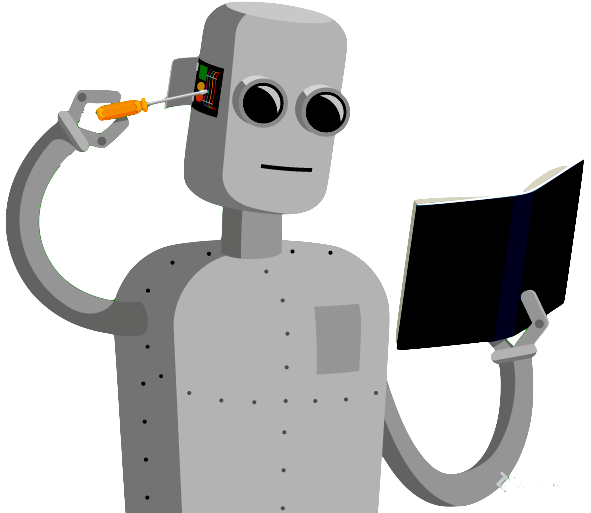In the present world machine learning is one of the greatest invention for future.Today’s we can’t think about machine.In 2021 most of the powerful country has reputeted their power in machine learning.
There is a speech that-
“Artificial intellegence , Deep learning,Machine learning-whatever you are doing if you don’t understand it-learn it.Because otherwise you’re going to be a dianosour within 3 years”-Mark cuban
In 1959 Arthur samuel said-
Machine learning is a field science that gives computers the abaility to learn without being explicity programmed.
Samuel claim to fame was that back in the 1950’s he wrote a checkers playing program ,and the amazing thing about this checkers playing ptogram was that arthur samuel himself.but wasn’t good checkers player.But he had to ptogram to play 10’s to 1000’s games against itself.That was a remarkable result.
otherwise TomMitchell said
In 1998-
A computer program is said to learn from experience E with respect to some task T and some performance measure P,if its perfotmance on T as measured by P ,improves with experience E.
well as the most recent milestones.History of machine learning….
1950 — Alan Turing creates the “Turing Test” to determine if a computer has real intelligence. To pass the test, a computer must be able to fool a human into believing it is also human.
1952 — Arthur Samuel wrote the first computer learning program. The program was the game of checkers, and the IBM computer improved at the game the more it played, studying which moves made up winning strategies and incorporating those moves into its program.
1957 — Frank Rosenblatt designed the first neural network for computers (the perceptron), which simulate the thought processes of the human brain.
1967 — The “nearest neighbor” algorithm was written, allowing computers to begin using very basic pattern recognition. This could be used to map a route for traveling salesmen, starting at a random city but ensuring they visit all cities during a short tour.
1979 — Students at Stanford University invent the “Stanford Cart” which can navigate obstacles in a room on its own.
1981 — Gerald Dejong introduces the concept of Explanation Based Learning (EBL), in which a computer analyses training data and creates a general rule it can follow by discarding unimportant data.
1985 — Terry Sejnowski invents NetTalk, which learns to pronounce words the same way a baby does.1990s — Work on machine learning shifts from a knowledge-driven approach to a data-driven approach. Scientists begin creating programs for computers to analyze large amounts of data and draw conclusions — or “learn” — from the results.
1997 — IBM’s Deep Blue beats the world champion at chess.
2006 — Geoffrey Hinton coins the term “deep learning” to explain new algorithms that let computers “see” and distinguish objects and text in images and videos.
2010 — The Microsoft Kinect can track 20 human features at a rate of 30 times per second, allowing people to interact with the computer via movements and gestures.
2011 — IBM’s Watson beats its human competitors at Jeopardy.
2011 — Google Brain is developed, and its deep neural network can learn to discover and categorize objects much the way a cat does.
2012 – Google’s X Lab develops a machine learning algorithm that is able to autonomously browse YouTube videos to identify the videos that contain cats.
2014 – Facebook develops DeepFace, a software algorithm that is able to recognize or verify individuals on photos to the same level as humans can.
2015 – Amazon launches its own machine learning platform.
2015 – Microsoft creates the Distributed Machine Learning Toolkit, which enables the efficient distribution of machine learning problems across multiple computers.
2015 – Over 3,000 AI and Robotics researchers, endorsed by Stephen Hawking, Elon Musk and Steve Wozniak (among many others), sign an open letter warning of the danger of autonomous weapons which select and engage targets without human intervention.
2016 – Google’s artificial intelligence algorithm beats a professional player at the Chinese board game Go, which is considered the world’s most complex board game and is many times harder than chess. The AlphaGo algorithm developed by Google DeepMind managed to win five games out of five in the Go competition.
So are we drawing closer to artificial.
So are we drawing closer to artificial.
Machine learning algorithm:
- Supervised Algorithm
-Linear regression
-Logistic regression
-Neural nework
-K-nearest neighbour algorithm
-Decision trees and random Forest
-SVM(support vactor machines)
- Unsupervised algorithm
-Clustering
1.k-means
2.HCA
3.Expectation maximization
-Visualization and dimesionality reduction
1.PCA
2.kernal PCA
3.T-SNE
4.Locally linear embadding
-Associate rule learning
1.Apriori
2.Eclat
What is supervised learning-
Superised learning is a problem of taking data sets,gleaning information from it so that you can level new data set,machine learning task to learning a function to input to output pairs.
In one word says Function approximiately.
Supervised learning is prediction variable /features and a target variable.Supervised learning data consist of(x,y) pairs.In supervised learning problems we start with a data set containing training example with associated correct level.
Input - 1 2 3 4 5 6 7
Output-1 4 9 16 25 36 49
input-output square
Their two task of supervised learning-
1.Regression
2.Classification
Regression:Predict a continious numerical value.Target variable to continious.
Classification:Assign a level,target variable consist of categories.
Regression algorithm:Some of the most powerful regression algorithm is-
1.Logistic regression
2.linear regression
3.Polynomial regression
-Classification:The best classification algorithm is
1.Naive Bayes
2.K-nearest algorithm
3.SVM
4.Decision trees.
Example of Supervised learning-
-Automate time consuming or expensive manual task
.Doctor test the diagonoisis
-Need level data
.Historical data with level
.price house prediction
Supervised learning we will use Scikit learn.
Other libraries
1 .Tensorflow
2.Keras



EmoticonEmoticon